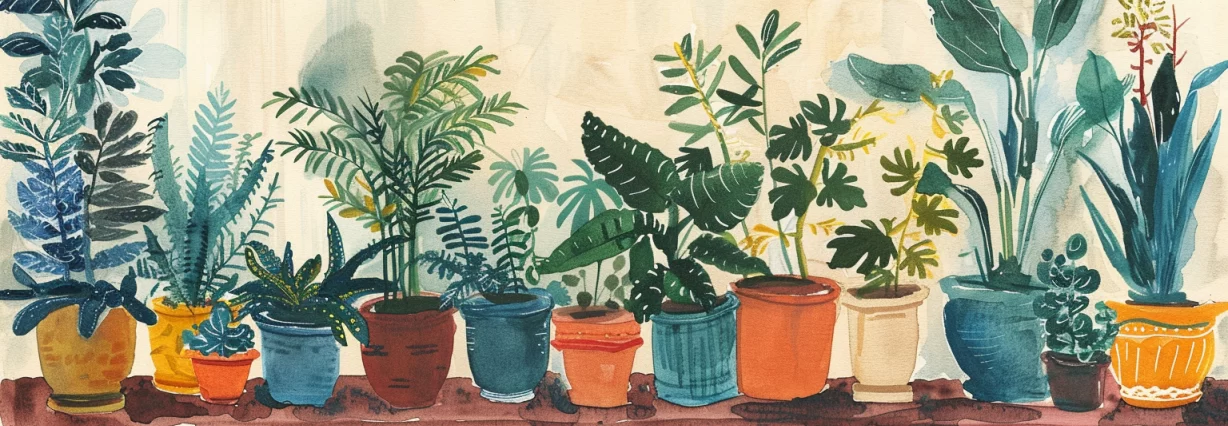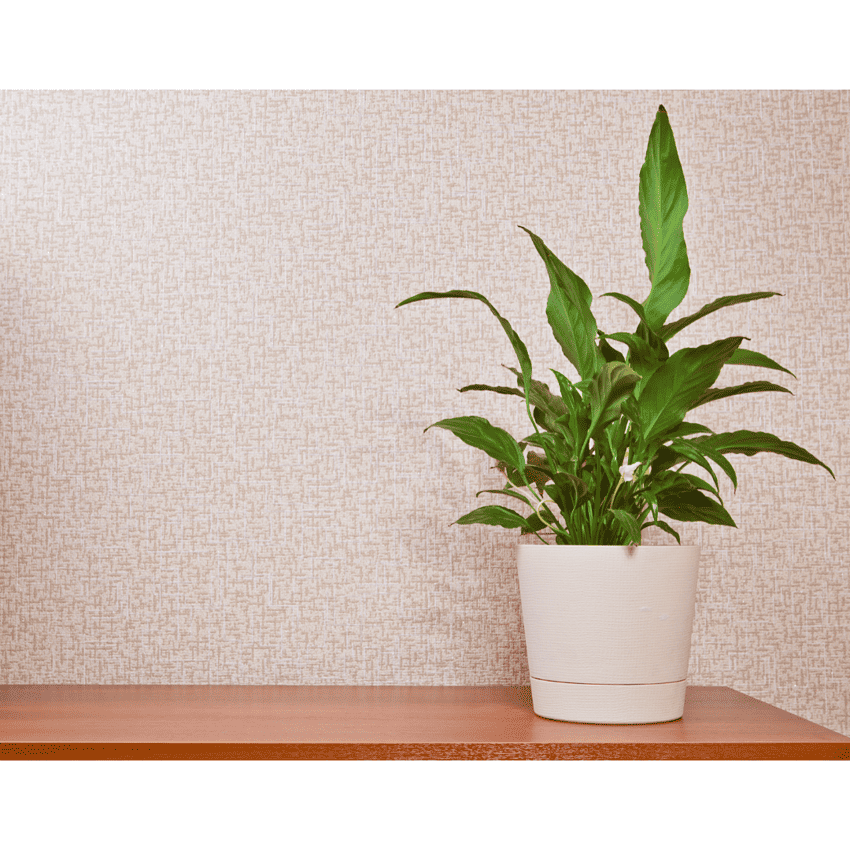Anthurium Pallidiflorum, also commonly known as the Strap Leaf Anthurium, is a unique and rare plant species that belongs to the family Araceae. This plant is native to Colombia and Ecuador and is often found in lowland forests and subtropical regions. It is a popular choice among plant collectors and enthusiasts due to its striking appearance and unique characteristics.
The Anthurium Pallidiflorum is known for its long, slender velvety leaves that have a sheen which mesmerizes the beholder. The leaves can grow up to three feet in length and have a dark emerald green color. This plant is a pendant leave aroid, which means that its leaves grow in a downward direction. It requires well-lit locations that receive medium, indirect sunlight and prefers temperatures of 70 to 90 degrees Fahrenheit (21 to 32 degrees Celsius). It is also recommended to grow it in a humus-rich mix that’s either peat-based or sphagnum moss.
In this article, we will explore the Anthurium Pallidiflorum in-depth, including its care requirements, propagation methods, and common issues that may arise when growing this plant. Whether you are a seasoned plant enthusiast or a beginner, this guide will provide you with all the information you need to successfully grow and care for your Anthurium Pallidiflorum. So let’s get started and discover the beauty and uniqueness of this stunning plant species.
Overview
Anthurium Pallidiflorum, also known as the Strap Leaf Anthurium, is a unique and beautiful species of flowering plant that belongs to the Porphyrochitonium section of Anthuriums. It is native to Colombia and Ecuador and is often found in lowland forests and subtropical regions. This plant has long, slender velvety leaves with a sheen that mesmerizes the beholder.
Description
The leaves of Anthurium Pallidiflorum can reach up to 20-26 inches long and 6-10 inches wide, making it a relatively large plant. The leaves are dark green in color, and the undersides of the leaves are a lighter shade of green. The plant produces flowers that are pale yellow in color and have a unique shape.
Species
Anthurium Pallidiflorum is considered a least-concern species by the International Union for Conservation of Nature, but it is still threatened by habitat loss. The plant is native to Colombia and Ecuador, where it grows in tropical rainforests at altitudes between 800 and 1500 meters.
Growth Habit
Anthurium Pallidiflorum prefers temperatures of 70 to 90 degrees Fahrenheit (21 to 32 degrees Celsius) and needs well-lit locations that receive medium, indirect sunlight. It grows well in a humus-rich mix that’s either peat-based or sphagnum moss. The plant is relatively easy to care for, making it a popular choice for indoor gardening.
Air Purification
Anthurium Pallidiflorum is a great air purifier and can help to improve the air quality in your home. The plant is known to remove harmful toxins such as formaldehyde, xylene, and ammonia from the air, making it a great addition to any home or office.
In summary, Anthurium Pallidiflorum is a beautiful and unique plant that is relatively easy to care for and can help to improve the air quality in your home or office. With its large, velvety leaves and unique flowers, it is sure to be a conversation starter. However, it is important to note that the plant is threatened by habitat loss, and steps should be taken to ensure its survival.
Care
Anthurium Pallidiflorum is a beautiful plant that requires a bit of care to thrive. Here are some tips to help you take care of your plant:
Watering
Watering is an essential aspect of anthurium pallidiflorum care. The plant requires consistent watering throughout the year, but it is crucial to avoid waterlogging. The soil should be moist but not soggy. Overwatering can lead to water stress, which can cause root rot and other problems.
Sunlight
Anthurium Pallidiflorum requires bright, indirect light to grow well. Direct sunlight can damage the leaves and cause the plant to wilt. Place the plant in a spot that receives bright, indirect light, such as near a window covered with a sheer curtain.
Temperature
Anthurium Pallidiflorum prefers warm temperatures between 70 to 90 degrees Fahrenheit (21 to 32 degrees Celsius). Avoid exposing the plant to temperatures below 60 degrees Fahrenheit (15 degrees Celsius) as it can cause stress.
Humidity
High humidity is essential for anthurium pallidiflorum. The plant thrives in a humid environment, and low humidity can cause brown leaf tips. You can increase humidity by placing a tray of water near the plant or by using a humidifier.
Soil and Potting
Anthurium Pallidiflorum grows best in a humus-rich mix that’s either peat-based or sphagnum moss. The soil should be well-draining to avoid waterlogging. Aerial roots are common in anthuriums, and they should not be removed, as they help the plant absorb moisture and nutrients.
Fertilizer
Anthurium Pallidiflorum benefits from regular fertilization during the growing season. Liquid fertilizer is ideal for anthurium pallidiflorum, but it should be diluted to half strength. Over-fertilization can cause stress and damage the plant.
Pruning
Pruning is essential to keep the plant healthy and encourage new growth. Remove any dead or damaged leaves, and trim any brown leaf tips. Avoid pruning too much, as it can cause stress to the plant.
Overall, Anthurium Pallidiflorum is a beautiful plant that requires a bit of care to thrive. By following these tips, you can help your plant grow healthy and beautiful.
Propagation
Anthurium Pallidiflorum can be propagated through seeds or division. Propagation is a great way to grow new plants and expand your collection.
Seeds
Propagation through seeds is a slow process and requires patience. The seeds of Anthurium Pallidiflorum are small and should be sown in a well-draining soil mix. Keep the soil moist and warm, and the seeds should germinate in a few weeks. Once the seedlings have grown a few leaves, they can be transplanted into their own pots.
Division
Propagation through division is a faster and more reliable method. To divide an Anthurium Pallidiflorum plant, gently remove it from its pot and separate the roots into smaller sections. Each section should have a few leaves and a healthy root system. Plant each section in its own pot with well-draining soil mix and keep the soil moist until the plant has established itself.
Propagation is best done in the spring or summer when the plant is actively growing. It is important to use clean tools and pots to prevent the spread of disease. Fertilizing the new plants is also important to ensure their growth and development.
In conclusion, propagation is a great way to grow new Anthurium Pallidiflorum plants. Whether you choose to propagate through seeds or division, it is important to be patient and give the new plants the care they need to thrive.
Common Problems
Anthurium Pallidiflorum is a beautiful plant that can add a tropical touch to any home. However, like any other plant, it can face some common problems that can affect its growth and health. Here are some of the most common problems that Anthurium Pallidiflorum can face and how to deal with them.
Pests
Anthurium Pallidiflorum is generally resistant to pests. However, it can still fall prey to common houseplant pests like spider mites, mealybugs, and scale insects. These pests can cause wilting, droopy leaves, and yellow and brown spots on the leaves.
To get rid of these pests, you can use insecticidal soap or neem oil. Make sure to follow the instructions on the label and apply it to both sides of the leaves.
Diseases
Anthurium Pallidiflorum can also be susceptible to various diseases that can affect its growth and health. Root rot and bacterial blight are the most common diseases that can affect Anthurium Pallidiflorum.
Root rot can occur when the plant is overwatered, and the soil remains wet for an extended period. This can cause the roots to rot, and the plant can wilt and have droopy leaves. To prevent root rot, make sure to water the plant only when the top inch of soil is dry.
Bacterial blight can cause yellow and brown spots on the leaves and can spread quickly. To prevent bacterial blight, make sure to keep the plant’s leaves dry and avoid overcrowding the plant.
Toxicity
Anthurium Pallidiflorum contains calcium oxalate crystals, which can be toxic to pets and humans if ingested. These crystals can cause irritation and swelling of the mouth, throat, and digestive system.
To prevent any accidental ingestion, make sure to keep the plant out of reach of pets and children. If ingested, seek medical attention immediately.
By being aware of these common problems and taking the necessary steps to prevent and treat them, you can ensure that your Anthurium Pallidiflorum stays healthy and beautiful.
Growing Tips
Container and Potting Mix
When it comes to growing Anthurium Pallidiflorum, choosing the right container and potting mix is crucial. The container should have good drainage holes to avoid waterlogging, which can lead to root rot. If you’re repotting your plant, choose a container that is one size larger than the current one. Repotting should be done every 2-3 years, or when the roots have outgrown the current container.
For the potting mix, a well-draining mixture that retains moisture is ideal. A mixture of peat moss, perlite, and bark works well for Anthurium Pallidiflorum. You can also add some charcoal to the mix to improve drainage and absorb any excess moisture. Avoid using heavy soils or those that retain too much water as they can cause root rot.
Light Levels
Anthurium Pallidiflorum requires bright but indirect light to thrive. Place your indoor plant near a window that receives filtered or indirect sunlight. Direct sunlight can scorch the leaves, so it’s best to avoid placing the plant in direct sunlight. If you’re showcasing your plant in a garden or hanging basket, ensure it is placed in an area that receives partial shade.
If you notice that your plant is not getting enough light, you can supplement with artificial light. Use a grow light that provides a full spectrum of light to mimic natural sunlight. Place the light about 6-12 inches above the plant and keep it on for 12-14 hours a day.
Remember, Anthurium Pallidiflorum is a tropical plant and requires warm temperatures and high humidity to grow well. Keep the temperature between 60-85°F and humidity levels above 50%. With the right container, potting mix, and light levels, your Anthurium Pallidiflorum will thrive and add a touch of tropical beauty to your home or garden.
Conclusion
In conclusion, Anthurium Pallidiflorum is a unique and rare plant that is native to Colombia and Ecuador. It is a favorite among collectors due to its impressive cascade of long dark emerald leaves that can reach up to three feet in length.
To care for Anthurium Pallidiflorum, it needs well-lit locations that receive medium, indirect sunlight. It prefers temperatures of 70 to 90 degrees Fahrenheit (21 to 32 degrees Celsius) and needs to be grown in a humus-rich mix that’s either peat-based or sphagnum moss. Watering is the most crucial element in the care of Anthurium Pallidiflorum. Over or under-watering can be harmful to the plant, so it is important to establish a watering schedule based on the moisture level of the soil.
Anthurium Pallidiflorum is a low-maintenance plant that can be grown both indoors and outdoors. It is a great addition to any garden or indoor space, adding a touch of elegance and uniqueness. However, it is important to note that it is toxic to both humans and pets if ingested, so it should be kept out of reach.
Overall, Anthurium Pallidiflorum is a beautiful and fascinating plant that is worth adding to your collection. With proper care and attention, it can thrive and bring joy to any space it is in.
Frequently Asked Questions
What is the natural habitat of Anthurium pallidiflorum?
Anthurium pallidiflorum is a tropical plant that is native to the rainforests of Central and South America. It is found growing on the forest floor or on the lower branches of trees. The plant prefers a warm and humid environment and can grow in shaded or partially shaded areas.
How do you care for Anthurium pallidiflorum?
Anthurium pallidiflorum requires regular care to thrive. The plant needs a well-draining soil mix that is rich in organic matter. It also requires regular watering and fertilization during the growing season. The plant prefers a warm and humid environment and should be kept away from cold drafts. Regular pruning and cleaning of the leaves can help prevent pest infestations.
What are the common pests and diseases of Anthurium pallidiflorum?
The most common pests that affect Anthurium pallidiflorum are spider mites, mealybugs, and scale insects. These pests can be controlled with insecticidal soap or neem oil. The plant can also be affected by fungal diseases such as leaf spot and root rot. Proper watering and good air circulation can help prevent these diseases.
How often should you water Anthurium pallidiflorum?
Anthurium pallidiflorum should be watered regularly during the growing season. The plant prefers moist but not waterlogged soil. Overwatering can lead to root rot, while underwatering can cause the leaves to wilt and dry out. The frequency of watering will depend on the environmental conditions and the soil mix used, but a good rule of thumb is to water the plant when the top inch of soil feels dry to the touch.
What is the ideal temperature range for Anthurium pallidiflorum?
Anthurium pallidiflorum prefers a warm and humid environment. The plant can tolerate temperatures between 60°F to 85°F (15°C to 29°C). It should be kept away from cold drafts and direct sunlight, which can cause leaf burn.
What is the best soil mix for Anthurium pallidiflorum?
Anthurium pallidiflorum requires a well-draining soil mix that is rich in organic matter. A good soil mix can be made by combining equal parts of peat moss, perlite, and orchid bark. The soil mix should be kept moist but not waterlogged, and the plant should be fertilized regularly during the growing season with a balanced liquid fertilizer.


